Doha said frustrated by lack of progress on various infrastructure projects in Strip, particularly stalled plans for a high-voltage power line from Israel
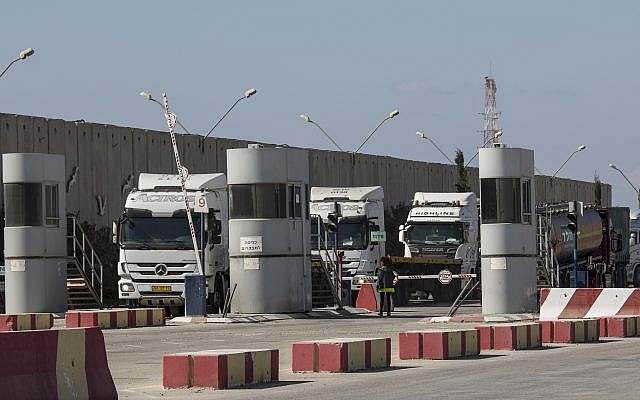
Qatar’s envoy to the Gaza Strip, Mohammad al-Emadi, has warned its Hamas rulers that Doha will not extend payments for the territory’s electricity supply beyond April, the Kan public broadcaster reported Monday night.
Palestinian sources told Kan the move comes amid Qatari frustration with Hamas’s foot-dragging on several large projects in the Strip, including a long-delayed high-voltage power line from Israel that could double the Strip’s power.
Palestinian officials told Kan they believed Doha’s threat may be intended to pressure Hamas into advancing the delayed infrastructure projects.
Under Al-Emadi’s supervision, the Gulf state has poured hundreds of millions of dollars into large-scale projects, including a new highway, state-of-the-art rehabilitation hospital and high-rise housing. Al-Emadi, an architect, has been a frequent visitor to personally oversee some of the work.
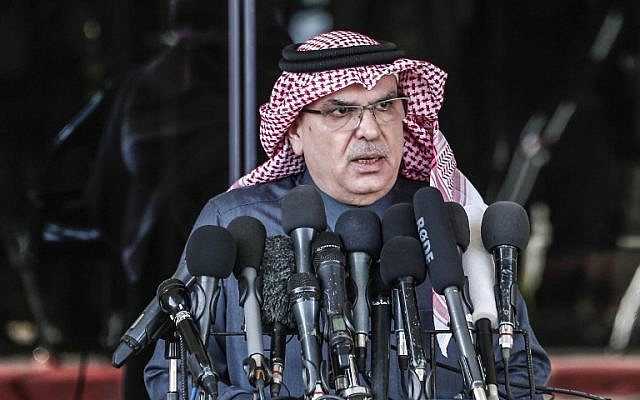
In October Qatar started transferring around $10 million a month in fuel to Gaza’s only power station, in a bid to alleviate conditions in the Palestinian enclave.
The shipments have allowed residents of the Strip to receive around eight hours of electricity a day, instead of the previous four.
But Qatar had only pledged six months of payments, and have now told Hamas they do not plan to extend the donations beyond April, according to Kan.
Israel allowed the Qatari-purchased fuel into Gaza, hoping it could help ease months of protests and clashes along the border. But it was met with criticism by officials close to Palestinian Authority President Mahmoud Abbas, whose rival administration was not involved.
Both Israel and Egypt enforce a number of restrictions on the movement of people and goods into and out of Gaza. Israel says the blockade is necessary to keep Hamas and other terror groups in the Strip from arming or building military infrastructure.
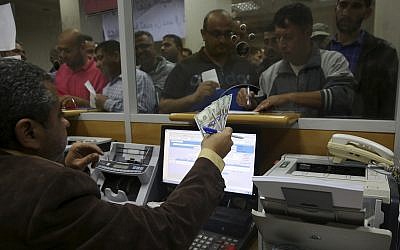
But the humanitarian crisis in Gaza has worsened steadily, and Hamas’s reconciliation talks with the Palestinian Authority have broken down.
Starting in November Qatar also began transferring $15 million a month, with Israel’s approval, to pay the salaries of Palestinian civil servants in Gaza — primarily Hamas employees. These payments are also set to last six months, and are currently slated to end in May.
In January Qatar signed an agreement to give $500 million to various UN agencies, most of which will be used to keep UNRWA afloat in the Gaza Strip. One project will see the UN employ 180,000 residents in an effort to reduce unemployment in the Palestinian enclave, which has soared to a rate of over 40%.
UNRWA, formally known as the United Nations Relief and Works Agency, ran into financial difficulties after in August 2018 the Trump administration said it would stop funding the organization.
The Qatari cash injection is part of an unofficial truce between Hamas and Israel that was supposed to see an end to months of violent protests along the Gaza-Israel border in exchange for an easing of Israel’s blockade of the coastal enclave.
Israel’s government has offered little information about the transfers, which have been roundly condemned by some on the right who see it as a reward for terror. A picture of money being brought into the Strip in suitcases was widely ridiculed.
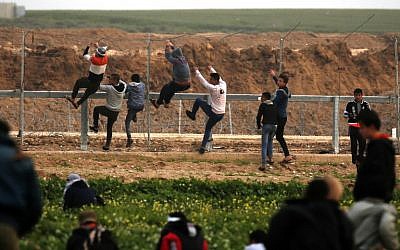
Clashes along the border have continued despite the cash transfers, though at a smaller scale. However recent days have once again seen an uptick in violence.
Palestinian “confusion units” returned to the Gaza border earlier this month after several months of refraining from evening riots, leading nightly clashes with Israeli troops focused on disorientation, alongside fires, explosives and infiltration attempts.
On Monday rioters threw dozens of explosive devices at the security fence and apparently sparked false reports of a mortar attack.
At least seven Palestinians were injured by Israeli gunfire, to varying degrees, in the clashes, according to the Strip’s Hamas-run health ministry.
Dozens of rioters — members of the so-called “confusion units” — took part in the clashes, east of Gaza City, burning tires, setting off dozens of explosive devices, shining lasers at Israeli soldiers across the border to blind them, and attempting to breach the security fence.
During the clashes, around 9 p.m., the Sha’ar Hanegev Regional Council, across from Gaza City, reported that a mortar shell had been fired from the Strip, hitting an empty field.
Minutes later, the local government retracted the claim, and the Israel Defense Forces confirmed that no projectile had been fired. “Despite the reports, no projectile was launched from the Strip at Israeli territory,” the IDF said.
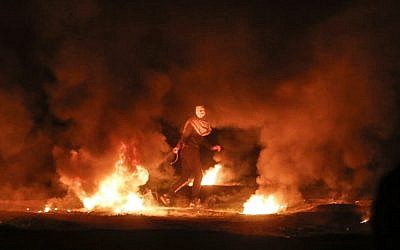
Monday’s nighttime clashes came a day after an IDF soldier was moderately injured in clashes along the northern Gaza border and two days after an attack lightly wounded a Border Police officer, the army said.
The IDF believes Hamas or the Iran-backed Palestinian Islamic Jihad, the second-largest terror group in Gaza, could attempt to draw Israel into a war by conducting an attack along the border — an anti-tank missile strike, an ambush from an as-yet-undiscovered tunnel, or a similar low-level but significant attack.
In light of this view, IDF chief Lt. Gen. Aviv Kohavi, whose tenure began last month, called for the military to update operational plans for fighting in the Gaza Strip.
Since last March, the Gaza border has seen large-scale weekly clashes on Fridays, smaller protests along the northern Gaza border on Tuesdays, and periodic flareups between the Israeli military and Palestinian terror organizations.
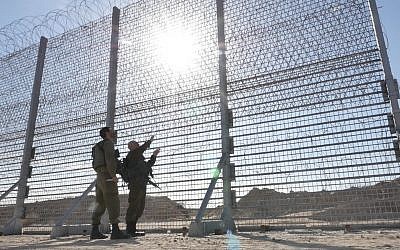
For the past several months, Egypt, UN special coordinator to the Middle East peace process Nikolay Mladenov and Qatar have worked to try to restore calm in Gaza and prevent flareups between Israel and terror groups in the Strip.
Israel has demanded an end to the violent demonstrations along the border in any ceasefire agreement.
Earlier this month, Israel announced that it had begun the final phase of construction of a 20-foot (some 6 meters) high galvanized steel fence that will completely surround the Strip.
The barrier will extend 65 kilometers (40 miles) miles around the enclave and sit atop the subterranean concrete wall that Israel is constructing around Gaza to block terrorist groups’ attack tunnels.
As reported by The Times of Israel
